Arthur Jafa and Sky Hopinka at Luma Arles: a tale of two Americas
Arts centre Luma Arles has opened major exhibitions by two American multimedia artists, Arthur Jafa and Sky Hopinka. Each show, poignant and sometimes unsettling, tells the story of two experiences of living in the United States
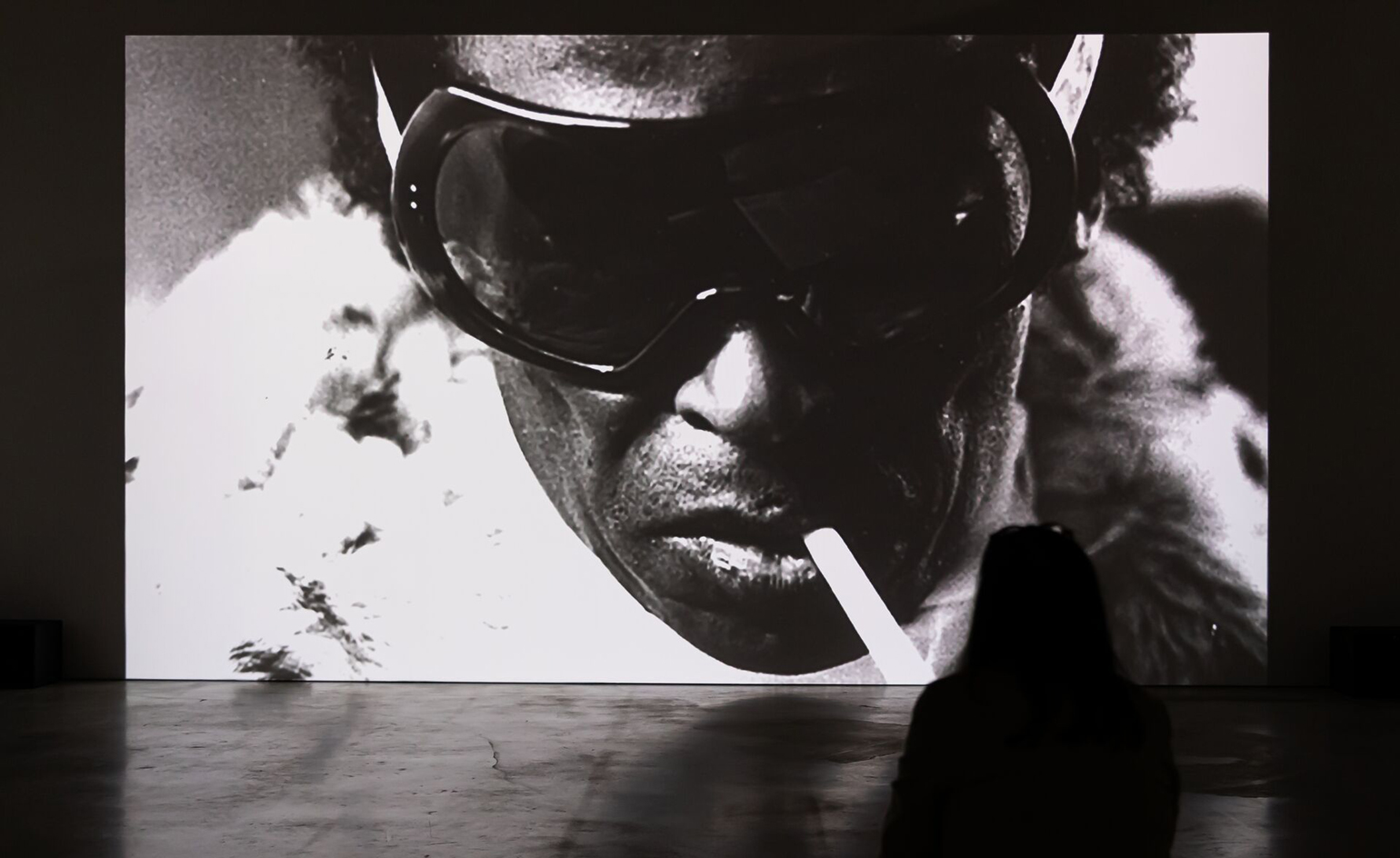
It has been a year since the Swiss art patron Maja Hoffmann opened the doors of Luma Arles on a vast former industrial site in the south of France. As she states in this season’s programme notes, ‘Luma Arles is becoming a place where unique experiences and outlooks on the current state of the world are shared.’
Indeed, the arts centre is now featuring major exhibitions by two American multimedia artists who have taken control of their narratives. Each speaks to his particular experience of living in the United States, and what it means to be part of a community whose voices have largely been silenced. As Arthur Jafa once said, ‘If you point a camera at Black people, on a psychoanalytical level, that camera is also functioning as a white gaze even if a Black person is standing behind the camera.’
Jafa’s exhibition, titled ‘Live Evil’ (also the name of a Miles Davis album), is the most comprehensive show of his work yet. Born in 1960 in Tupelo, Mississippi, Jafa spent much of his career in the shadows, making his living by working as a cinematographer for others. In 2016, he finally received global recognition for his seven-minute film Love Is the Message, The Message is Death, a powerful montage of found videos showing different aspects of the Black experience, set to Kanye West’s gospel-inflected ‘Ultralight Beam’. A couple of years later, he shifted the focus to whiteness and the limits of compassion with The White Album, 40 minutes of found and original video. It won a Golden Lion at the 2019 Venice Biennale (and is on display at the Luma Arles exhibition).
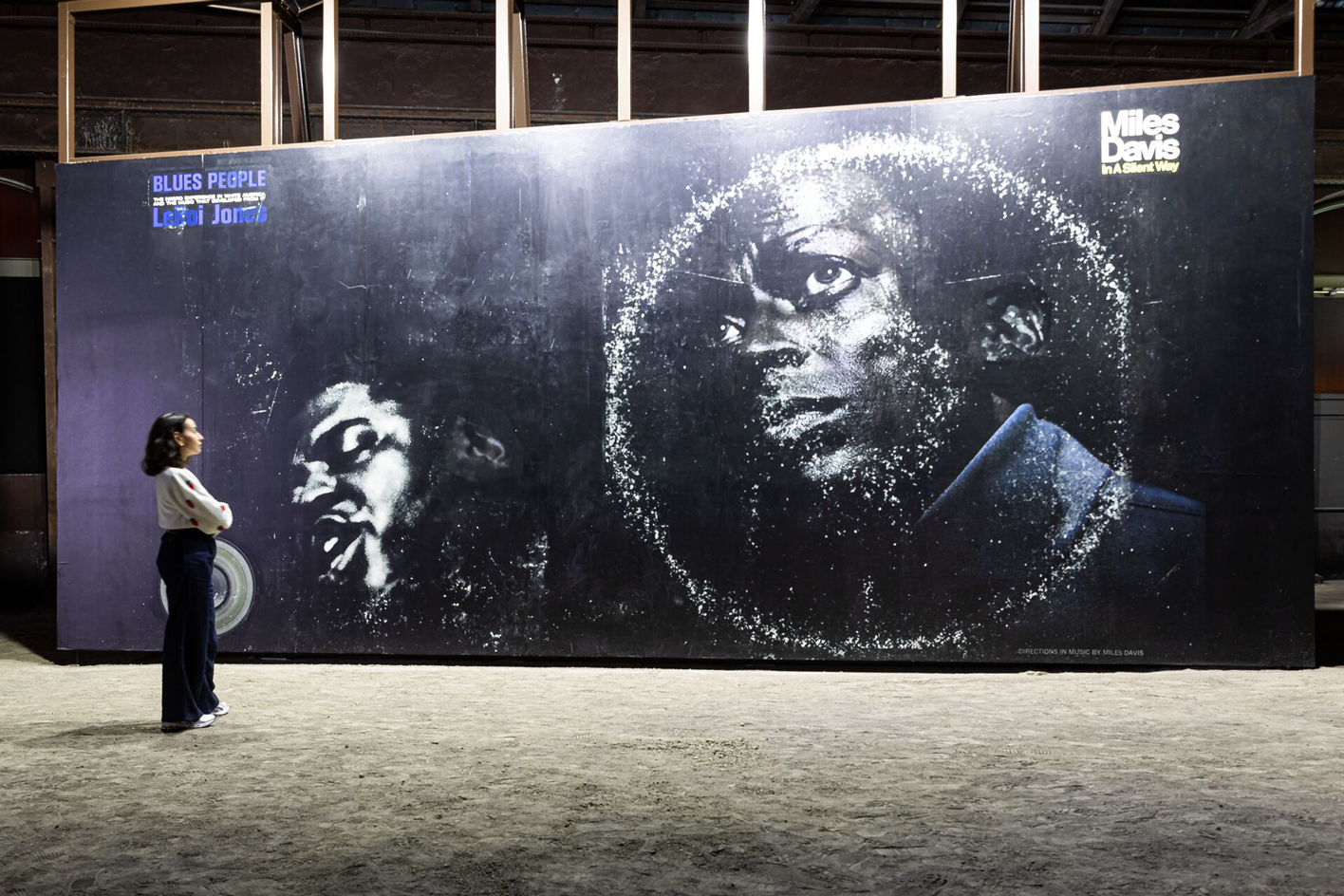
Blue People In A Silent Way in ‘Live Evil’, Arthur Jafa – La Grande Halle, Parc des Ateliers, Luma, Arles, France.
Unearthing archival photos and footage is an important part of Jafa’s practice, enlarging or editing them together for unsettling results. One of the first works in this show is a startling photograph of Black schoolchildren performing a Nazi salute to the American flag. In fact, this was the Bellamy salute, a gesture that accompanied the US Pledge of Allegiance from 1892 to 1942, ending when the Third Reich adopted it.
Jafa also tells the story of race relations through his sculptures and installations, such as Big Wheel II (2018), an enormous black tyre bound in chains; Ex-Slave Gordon 1863 (2017), a plastic impression of a human figure with a scarred back; and LeRage (2017) a life-size cut-out of a black Incredible Hulk that he sees as a kind of self-portrait.
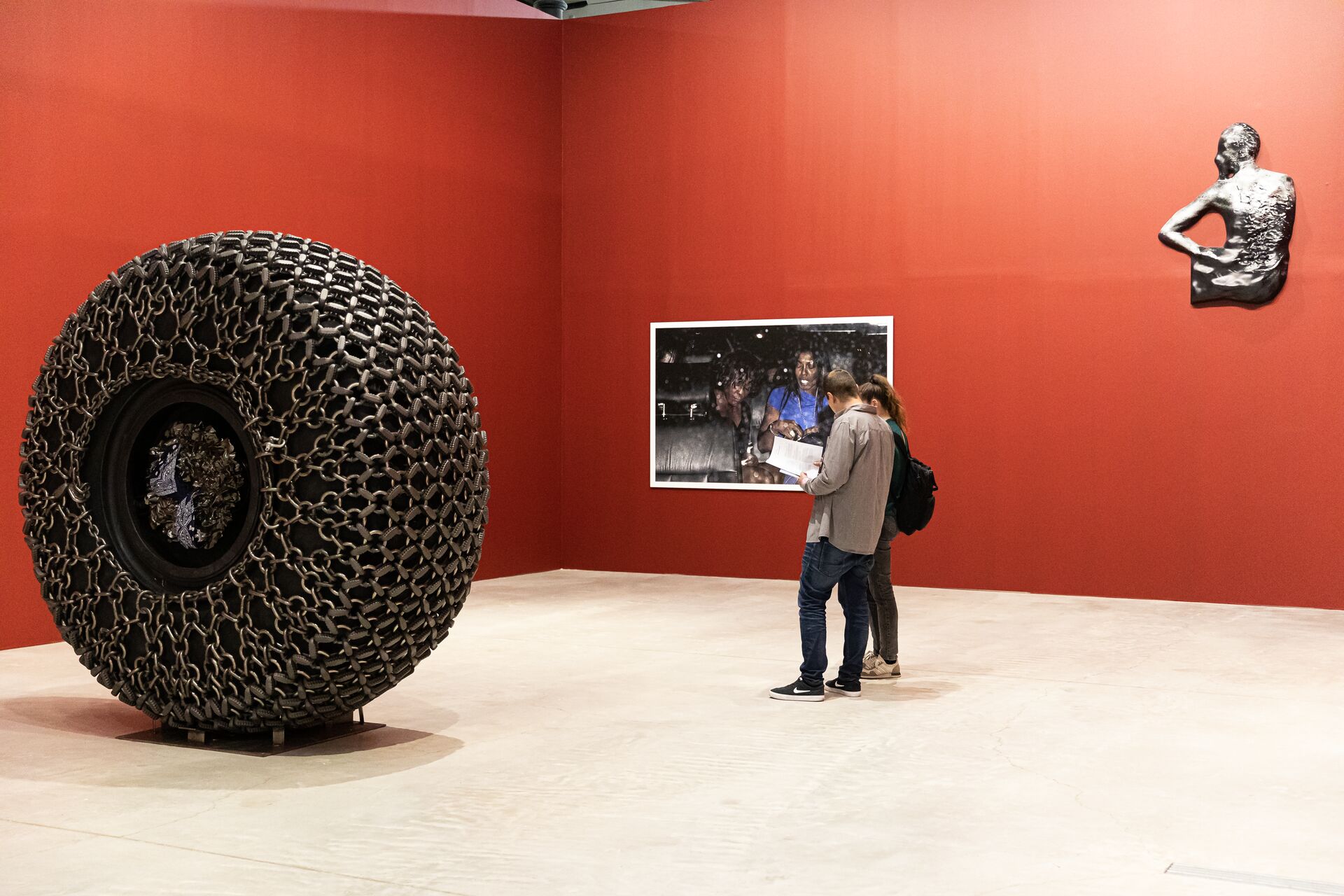
Big Wheel II, Geto and Ex-Slave Gordon 1863 in ‘Live Evil’, Arthur Jafa – La M canique G n rale, Parc des Ateliers, Luma, Arles, France.
In the cavernous space of Luma’s Grande Halle, AGHDRA is a departure for the artist, an abstract, computer-generated video he made in 2021. For 85 minutes, a digital ocean of black lava-like rocks moves and churns in undulating waves beneath an end-of-time sun, to the booming sounds of bass and music distorted by reverb. The effect is both suffocating and mesmerising, conjuring up thoughts of slave ships crossing the Atlantic, or the loss of civilisation.
If Jafa’s show is a punch in the gut, Sky Hopinka’s show takes us on a journey that can be equally as disturbing, yet in a softer vein. Hopinka was born in 1984, a member of the Ho-Chunk Nation of Wisconsin and a descendant of the Pechanga Band of Luiseño people. Best known for his experimental cinema, and increasingly for photography and poetry, he refers to his style as ‘ethnopoetic’.
Wallpaper* Newsletter
Receive our daily digest of inspiration, escapism and design stories from around the world direct to your inbox.
‘The sun comes in whenever it wants’ is the title of this exhibition, which combines Hopinka’s personal story with the collective history of Indigenous people in the US. Examining identity and perception, his videos and photographs draw upon family recollections, interviews, and travel diaries. They are deeply meditative and technically masterful.

The Land Describes Itself in ‘The sun comes in whenever it wants’, Sky Hopinka – Les Forges, Parc des Ateliers, Luma, Arles, France.
Fascinated by language as a container of culture, he made wawa, his first experimental film, in 2013. Six minutes in length, it focuses on Chinook Wawa, a trade language that originated in the Pacific Northwest and is practically extinct. Three generations of speakers talk in and about the language, with layers of subtitles reflecting the difficulty of translating certain concepts into different tongues.
In Lore, a video from 2019, Hopinka assembles and reassembles fragments of photo transparencies on an overhead projector. We hear his voice reading his poetry, a mix of memories and myths (eg, ‘I killed a spider last night and I apologised in earnest. My grandmother was a spider’), along with footage of him playing music by Bo Diddley with a group of friends. He says Lore references the experimental film (nostalgia) by Hollis Frampton. ‘I was interested in the romanticisation of nostalgia, but more what the function of nostalgia is – where it isn’t the ends, but rather the means, of getting to something deeper, something perhaps more meaningful or useful.’
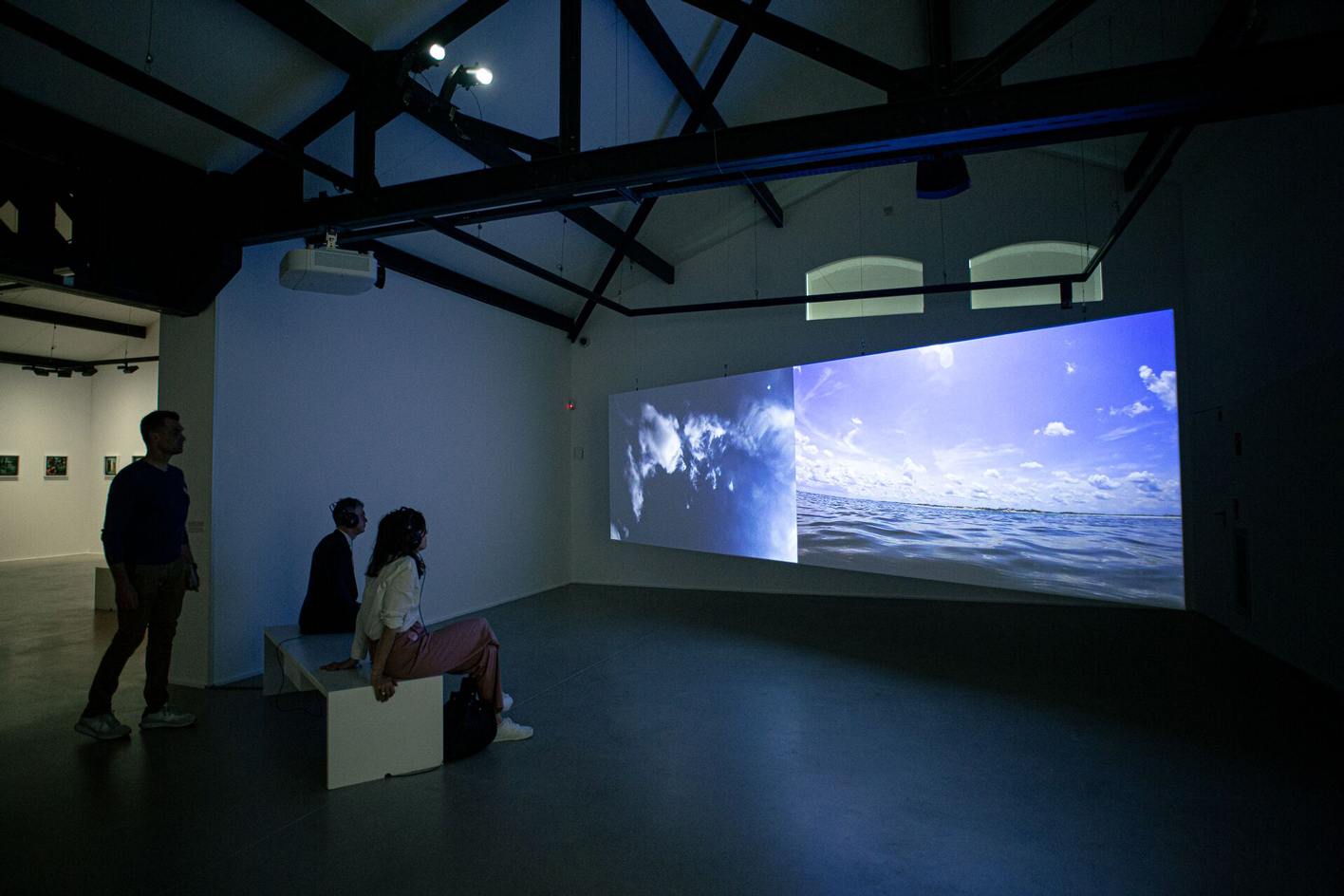
Cloudless Blue Egress of Summer in 'The sun comes in whenever it wants', Sky Hopinka– Les Forges, Parc des Ateliers, Luma, Arles, France.
One large room is devoted to a series of videos about homeland and ancestry. In the hallucinogenic Fainting Spells (2018), the artist imagines a myth around the Xawiska, or Indian Pipe Plant, that Ho-Chunk people used to revive the unconscious. Handwritten text scrolls across the screen to the mournful sound of wind instruments. Images of scenery turned sideways, in saturated colours, give way to a lone figure walking through a ruined landscape, lightning flashing behind an empty parking lot at night, and people on a beach being pulled upwards to become one with the sky.
It takes several hours to properly visit both shows – which is only natural, as they are entire histories, told by voices from another America.
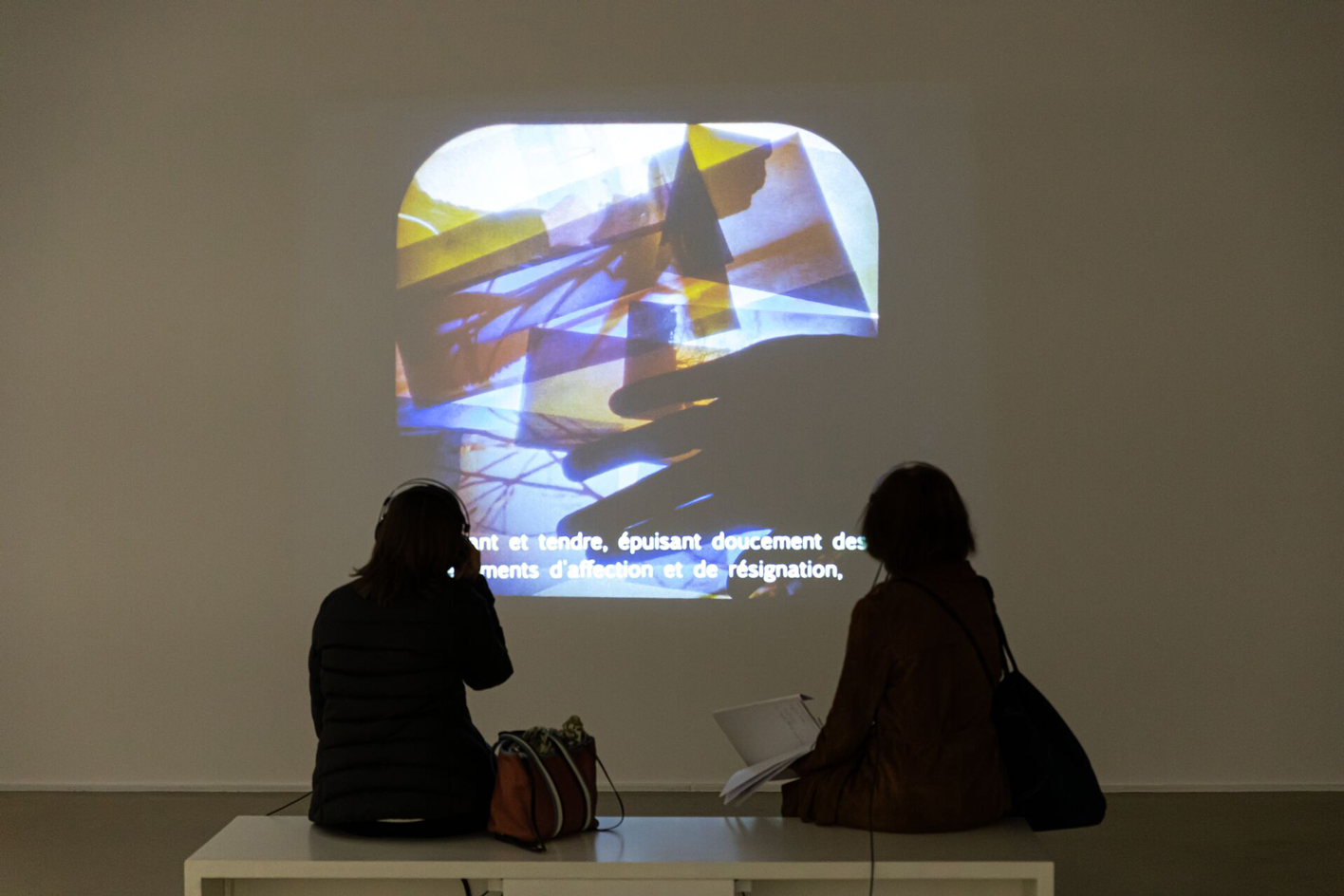
Lore in 'The sun comes in whenever it wants', Sky Hopinka– Les Forges, Parc des Ateliers, Luma, Arles, France.
INFORMATION
Arthur Jafa: ’Live Evil’ and Sky Hopinka: ’The sun comes in whenever it wants’, are now on view at Luma Arles. luma.org
-
 All-In is the Paris-based label making full-force fashion for main character dressing
All-In is the Paris-based label making full-force fashion for main character dressingPart of our monthly Uprising series, Wallpaper* meets Benjamin Barron and Bror August Vestbø of All-In, the LVMH Prize-nominated label which bases its collections on a riotous cast of characters – real and imagined
By Orla Brennan
-
 Maserati joins forces with Giorgetti for a turbo-charged relationship
Maserati joins forces with Giorgetti for a turbo-charged relationshipAnnouncing their marriage during Milan Design Week, the brands unveiled a collection, a car and a long term commitment
By Hugo Macdonald
-
 Through an innovative new training program, Poltrona Frau aims to safeguard Italian craft
Through an innovative new training program, Poltrona Frau aims to safeguard Italian craftThe heritage furniture manufacturer is training a new generation of leather artisans
By Cristina Kiran Piotti